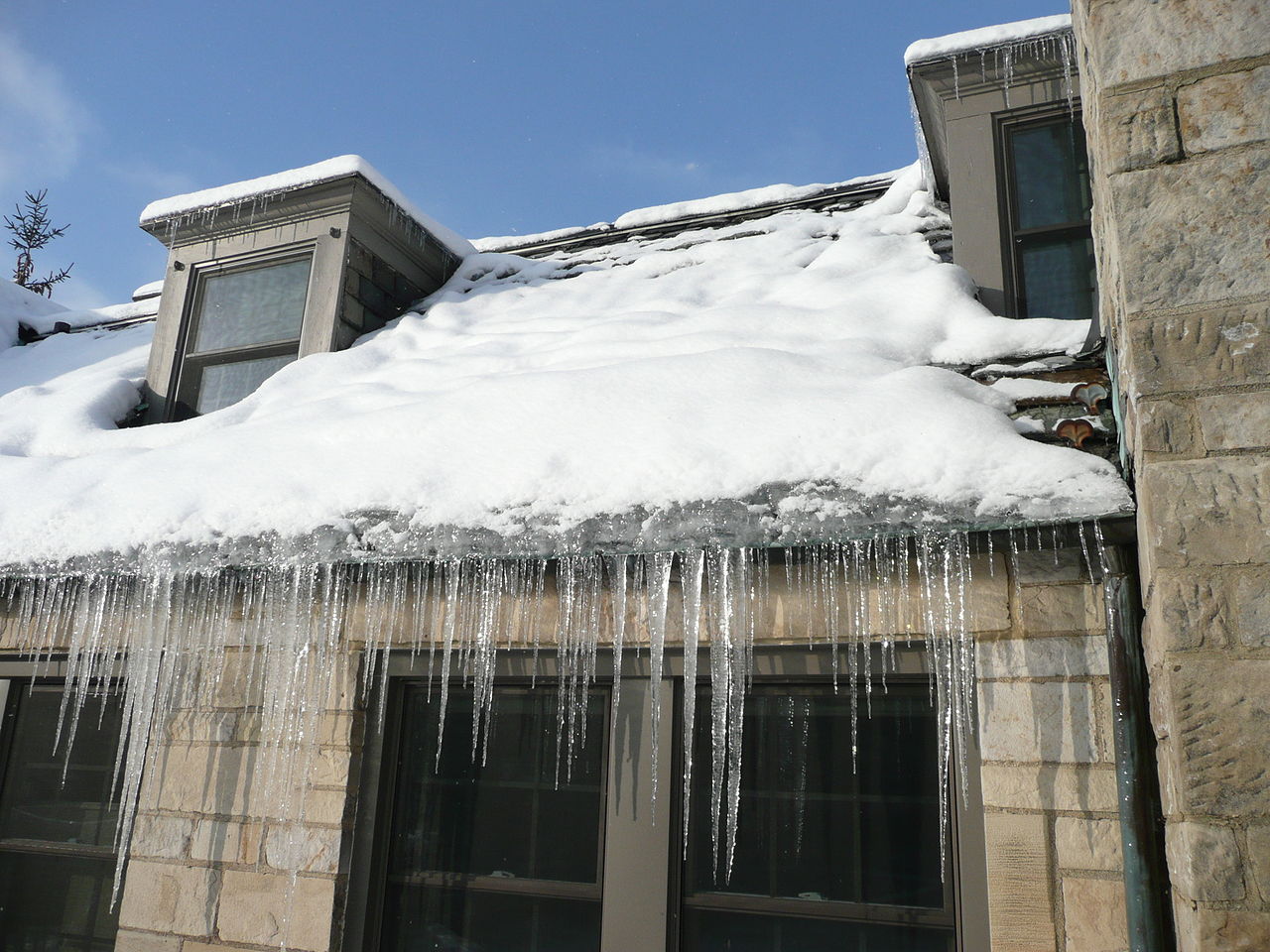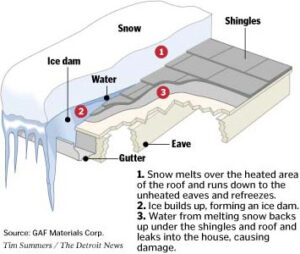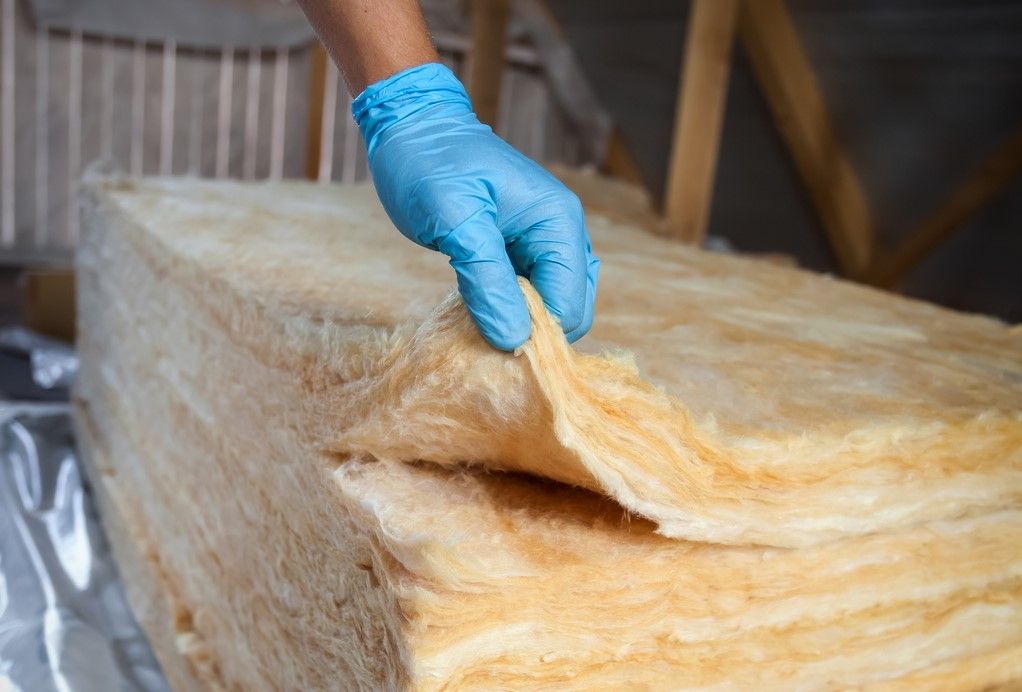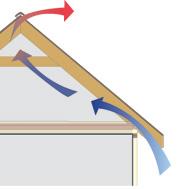
What is an ice dam?

Ice dams are most common in northern climates that are subject to heavy snow buildups on roofs. Ice dams occur when this heavy snow buildup melts during the day and then refreezes when temperatures fall overnight. After several days of the thaw-freeze cycle, it’s common for the ice to work up under the shingles until it reached an area of the roof warmed by your home. This is when your home becomes vulnerable because that ice begins to melt from your home’s warmth and causes a leak. This leak can potentially damage your ceiling, walls, and the contents of your home. The problem worsens because insulation loses its R-Value when it gets wet. In cases where the ice dam goes unnoticed for an extended time, there can be significant damage to the building and its contents.
What causes ice dams?
Ice dams are barriers to water runoff on the roof. They usually form at the roof edge, just above the gutter, in cold, snowy climates. They form when snow melting on warmer areas of the roof, usually near the ridge, runs down and refreezes at colder roof overhangs. Warm spots on the roof are caused by the heat that escapes from the living space into the attic. Once this cycle of melting and refreezing begins, a barrier is formed, trapping the snowmelt and allowing it to flow up and under shingles.
As the water begins to penetrate sheathing, insulation, wall cavities, and sheetrock or plaster:
- Paint can begin peeling on both inside and outside walls
- Roof coverings, fascia, and gutters can be damaged
- Structural damage can result from the weight of the ice dam
Homeowners usually blame their gutters, since that’s where the problem appears to be. But newer, wider, deeper gutters won’t solve the problem. Nor will add layers of insulation alone. What will solve it is adequate ventilation combined with proper levels of insulation.
How to prevent ice damming?
There’s no surefire way to guarantee an ice dam won’t damage your home, but there are steps you can take that will greatly reduce the chances of an ice dam forming in the first place.
Clean your gutters
Cleaning your gutters of all debris each fall will allow melting winter snow to flow away from your home through the gutters as it is intended to.
Remove snow from roofs
Once winter arrives, make every effort to keep the snow load on your roof to a minimum. Keeping heavy snow loads off your roof serves as twofold protection. Primarily, it reduces the chance of ice dam formations. These formations may go undetected under a snow load. Secondly, keeping a clear roof will reduce the chance of roof failure due to excess weight.
Add some insulation
Hire a professional to measure the R-value of roof insulation and if it is needed add some more insulation.
Roofing Above All offers aid in protecting your home from the harsh winter weather.

Ventilation and ice dams. What’s the connection?
 Balanced Vent The key to solving ice dams is to create a cold roof. A cold roof occurs when the temperature inside the roof sheathing is near that of the outside air temperature. To achieve this condition, large volumes of outside air must enter low on the roof through the intake vents, sweep along ridge rafters, and then exit at vents near the ridge. To prevent trapping warm air in the attic, an equal balance must be established between intake and exhaust air volumes.
Balanced Vent The key to solving ice dams is to create a cold roof. A cold roof occurs when the temperature inside the roof sheathing is near that of the outside air temperature. To achieve this condition, large volumes of outside air must enter low on the roof through the intake vents, sweep along ridge rafters, and then exit at vents near the ridge. To prevent trapping warm air in the attic, an equal balance must be established between intake and exhaust air volumes.
Since such a ventilation system is bringing cold air into an attic, it’s important that your insulation has at least an R-value of 49, to minimize heat loss on the attic floor. As an added precaution, Roofing Above All always uses waterproofing shingle underlayment. It provides a waterproof barrier beneath roof shingles that pooled water from melting ice dams and driven rain cannot penetrate.